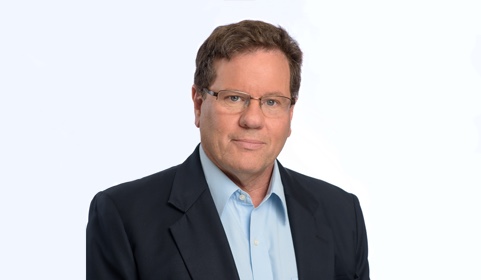Practice of the Israeli Patent Office with respect to Examination of Biological Sequences

The Registrar of Patents, Designs and Trademarks recently issued a Circular Letter MN64 dated October 6, 2008, which laid down new directives pertaining to examination practice of claims relating to biological sequences, including amino acid and nucleotide sequences.
The new practice brings the examination guidelines of the Israeli Patent Office (ILPO) more into line with the examination practice in other countries. However, they seem yet to be too restrictive in some aspects as compared to the practice of other major patent offices.
BACKGROUND
Some time in 2007, the examiners at the ILPO began to raise routine objections against claims directed to new biological sequences, requiring adding a recitation of the intended use of the sequence into the claim. In other words, the requirement was to specify a claimed sequence as being intended for use in a specific application, notwithstanding the fact that the sequence was novel and as such merited broad patent protection without a use limitation.
In raising such objections examiners quoted Section 3 of the Patents Law – 1967 and Rule 20(a)(3) as a relevant legal basis. Section 3 of the Law lays down the overall patentability requirements and stipulates, among others, the requirements for utility¹. Rule 20(a)(3) specifies the requirement that the claims define the invention in a clear and concise manner².
In some non-formal conversation examiners explained that this practice was an internal guideline, as it was felt at the ILPO that without specifying utility, the claims would not meet the utility requirements of Section 3 and could not be regarded as clear and concise under Rule 20(a)(3). Arguments made in specific cases that recitation of utility unduly limits the claims were unsuccessful.
RC INITIATIVE
Early in 2008 we took the initiative of submitting to the Registrar of Patents a paper in which we made out the case that the examination practice that was adopted by examiners with respect to biological sequences was unreasonable. Among others, as an illustration, we brought examples of cases where examiners required the addition of utility statement into the claims, while counterpart patents in other countries were granted without such recitation.
Following submission of the paper we attended a private conference with the Registrar, the Superintendent Examiner and the Chief Life Sciences Examiner and discussed the matter. As follow-up the Registrar issued draft guidelines for comments, and, following some comments to the draft, the Circular Letter MN64 was issued.
THE NEW EXAMINATION GUIDELINES
The new guidelines stipulate a number of requirements and conditions for claims to sequences to be accepted:
- Claims for new biological sequences per se will be allowed provided that the biological activity of the biological sequence is described in the specification.
-
Claims directed to a larger sequence that includes specified sequence (as opposed to a claim for s specific useful sequence) will not be allowed
without a utility limitation in the claim. It is
specifically pointed out that while the term “consisting” is permitted in such claims, open ended terms such as “comprising”, containing”, “covering”, “having” or “including” will not be allowed, without said limitation. In other words, a claim reading “[a] sequence comprising a sequence of SEQ ID No. 1” will not be allowed without recitation in the claim of the intended use of the sequence); allowed will be a claim reading “[a] sequence comprising a sequence of SEQ ID No. 1 for use in [biological/medical utility disclosed in specification]” or a claim reading “[a] sequence consisting of the sequence of SEQ ID No. 1″. -
Claims for portions of sequences, derivatives and homologues will be acceptable, again only subject to as utility limitation. Importantly, it is specifically stated in the Circular Letter that such portions, derivatives and homologues will usually be considered as belonging to the same invention as the sequence claims.
The new directives also note that biological sequences need to be provided in TXT format only, in line with WIPO’s ST.25 standard.
The new practice will apply to all new applications as well as to all pending applications where the Notice of Allowance has not yet been received as at the date of the Circular (October 2008). While the new practice seems reasonable and in line with that of the USPTO and the EPO, as far as it eliminates the need to limit claims for new sequences and portions by reference to the useful function disclosed in the specification, it falls short of the desired and of the accepted practice in some major patent offices at least with respect to sequences that comprise a larger sequence. The matter will have to be addressed on a case-by-case basis and it remains to be seen how examiners will respond to arguments on the merits. It also remains to be seen whether this new policy, enunciated by the ILPO, will be upheld by the Israeli courts, if an unsatisfied applicant decides to appeal a final decision of the examiner.
It should be emphasized, in this regard, that the purpose of our newsletter is merely informative. We do not express a legal opinion on the legality of the new ILPO policy.
1 Section 3 of the Israeli Patents Law reads:
3. An invention, whether a product or a process, in any field
of technology, which is new and useful, can be used industrially, and involves an inventive step, is a patentable invention.
2 Rule 20(a)(3) reads:
20. (a) The specification will include the following topics in their order:
(1)…
(2)…
(3) A claim that defines the invention in a clear and concise manner.
This article is provided for general information only. It is not intended as legal advice or opinion and cannot be relied upon as such. Advice on specific matters may be provided by our group’s attorneys.
